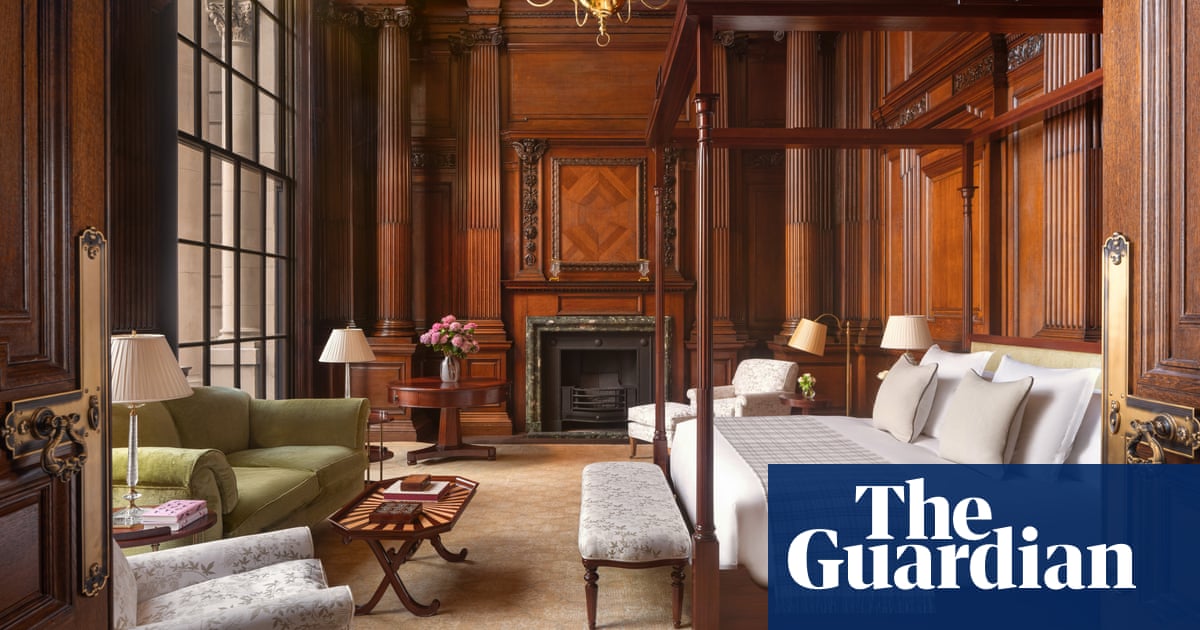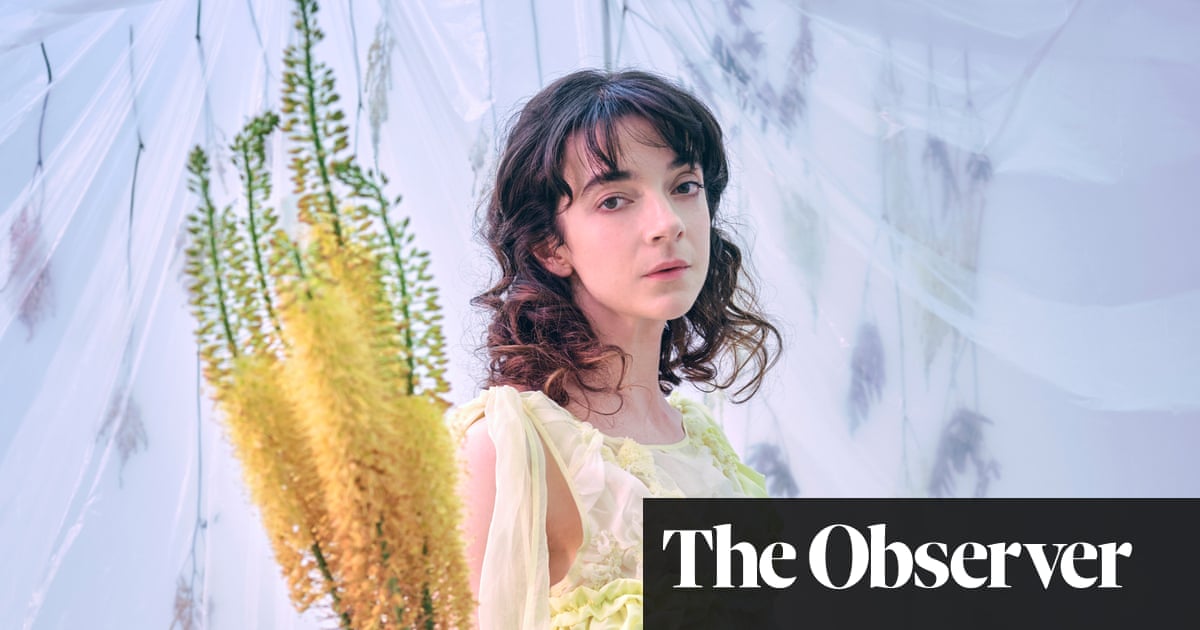
At the Tower of London, on one of the warmest days yet of 2022, spring sunlight glints from the four golden weather vanes atop the White Tower’s turrets, and shines on daffodils along the banks of the moat. Swarms of schoolchildren are dressed in T-shirts and eating ice-cream. But crucially, after weeks of overcast skies, the sunshine is a boost for the team of landscape contractors busy preparing the moat for what could be the greatest floral spectacle Britain has ever seen: the Queen’s Platinum Jubilee “Superbloom”.
As I walk around the site with Nigel Dunnett – the urban horticulture expert responsible for the delivery of this garden – there’s a sense of optimism in the air. “We’re pushing on!” booms lead contractor Mark Gregory over the roar of tractor engines. “With this warmth, we’ve got a chance!”
Sunshine and optimism are necessary for a project like this, but so is a profound confidence in the processes of the natural world. Between June and September this year, the moat will become a vast flower field, carpeted with thousands of bright annual blooms sown from seed – cornflowers and flaxes, umbellifers and sunflowers. In contrast to the great swathe of ceramic red poppies that occupied the moat in 2014 to mark the centenary of the first world war, this will be a living display. “The eyes of the world are going to be on it,” says Dunnett.
Having implemented bold planting schemes from London’s Barbican and Buckingham Palace to the streets of Sheffield (he is professor of planting design and urban horticulture at the city’s university), Dunnett is no stranger to high-impact horticulture.
For the London 2012 Games, his Olympic Gold Meadows at the Olympic Park in Stratford were a crowd-wowing mass of flowers that transitioned from blue and orange to sheets of gold as the seasons progressed. And like Superbloom, these displays were sown directly from seed.
“Creating landscapes from seed takes a bit of a leap of faith,” says Dunnett. “In March to April 2012, large parts of the Olympic Park looked much like this: just bare soil.” He tells how the park managers began questioning whether any plants would appear. “They bought up two whole turf farms’ worth of turf to cover the area just in case it didn’t work.”
Childhood experiences in the natural world, in Suffolk and Kent, influenced his creative approach. “I started to feel that the things I was seeing in nature, a coppiced wood full of bluebells, for example, I never saw in gardens. I wanted to explore how you could bring that experience, that feeling, of the wild into gardens. That’s what I’m still doing.”
Indeed, a display of wild nature inspired his concept for the Jubilee celebration. In 2019, a rare “super bloom” erupted across the American south-west, decorating the canyons and deserts of California in an unprecedented volume of vibrant wildflowers, among them orange poppies, violet tansy and blue sage. “I was on a speaking tour in California and was lucky enough to experience this thing where not just whole landscapes, but mountain ranges in the distance changed colour,” says Dunnett. He found the human reaction similarly remarkable. “Hundreds of thousands of people were coming to visit; they wanted to get in and almost bathe among the flowers.”
The idea of bringing a super bloom to London very much clicked with Historic Royal Palaces (HRP), which in 2019 had asked Dunnett – in partnership with pioneering landscape practice Grant Associates – to create a garden at the Tower for the Jubilee. “It was this idea of something that only happens once in a century,” he tells me, “something really special, rare, never to be repeated.”
Dunnett guides me along the route visitors will take through the flowers, including an undulating pathway that will offer full immersion. A slide – yes, an actual slide – will transport visitors down into the moat (there is also an accessible ramp), and a raised viewing platform of woven willow – called the Nest, beautifully sculpted by artist Spencer Jenkins – will allow people that crucial Instagram moment, something Dunnett embraces, as it encourages younger people to engage with nature. Lighting will enhance evening activities, and a soundtrack installation will counteract the road noise overhead.
Trial sowings in the moat last year showed that it would be better to lay new soil – 10,000 metric tonnes of it, specified by soil scientist Tim O’Hare for moisture retention and limited fertility – on top of the existing lawn. Underneath, drainage pipes feed into a Victorian culvert, to prevent water-logging. “In July last year there were severe rainstorms: the moat flooded and everything was flattened,” says Dunnett. “That made me change the seed mixes to ensure there were plenty of robust plants in there.”
One such plant is the UK native Echium vulgare (the violet-blue viper’s bugloss). “You can have a hurricane run through and it pretty much stands up.” Dunnett will use 15 different seed mixes in the moat, partly inspired by a series of Thames landscape paintings by Monet in the early 20th century. “The colours are incredible. Because of the links to the river, I’ve based the colour sequencing on those paintings – from gold and rich yellows as you come in to deeper pinks and purples.” Flowering times are staggered, starting with early bloomers such as Moroccan toadflax and gypsophila through to poppies, cornflowers and Ammi majus (bishop’s flower) for midsummer, with late-flowering cosmos and rudbeckias to finish.
To broaden the project’s reach, HRP initiated a Superbloom Schools campaign, supplying schools across the UK with seeds and advice for creating their own mini Superblooms. “It’s to make it a truly national project,” says HRP’s director of public engagement, Tom O’Leary. “So it’s anything from a windowsill plant pot to a patch of school field.”
Although Superbloom is intended as a one-off celebration, much of its landscape infrastructure has been built for legacy. Dunnett talks of an echo of the Superbloom as it self-seeds into next year, and of the potential for creating wildlife habitats. “It could be a gamechanger in terms of how HRP looks after historic sites,” says project director Rhiannon Goddard.
Four years ago, along with residents of a nearby housing estate, I removed an area of turf in a park close to the Garden Museum in Lambeth, where I am head gardener, and sowed one of Dunnett’s mixes. As they bloomed throughout summer, the flowers engaged and excited people in a way I’d never seen, and continue to do so with each yearly sowing.
“That’s the basis of it – the human response,” says Dunnett. “It’s so important these ideas about beauty and biodiversity jump out from the garden and fill our city spaces. For the past 10 years that’s what I’ve focused on, the places 20 or 30 years ago you’d think were no-go areas, like pavements, streets, car parks, rooftops. There’s so much untapped potential. I’m convinced now it has to be transformational like this – the time for being timid is over.”












